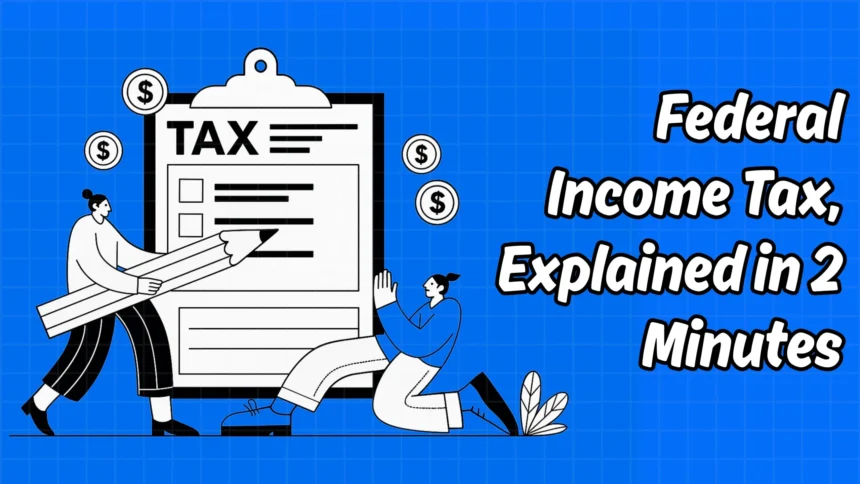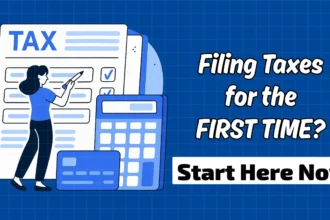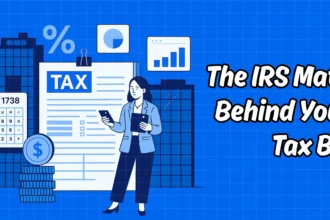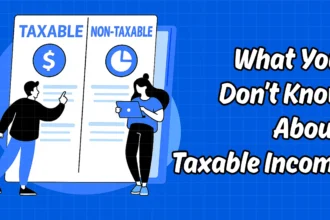Key Takeaways
- Federal income tax is a tax on the money you earn.
- It’s collected by the IRS and funds major programs like Social Security, defense, and education.
- The U.S. system is progressive—higher earners pay a higher rate.
- Employers typically withhold it directly from your paycheck.
- Deductions and credits can reduce what you owe or increase your refund.
- Yearly filing settles whether you overpaid or underpaid.
Introduction
When most people think of taxes, they picture that bite taken out of each paycheck—that’s federal income tax. But what does it really mean? Where does the money go? And how do you know if you’re paying too much—or not enough? In this guide, we’ll unpack what is federal income tax in plain English. No confusing IRS jargon, no hidden twists—just a clear view of how it works and why it matters for your paycheck in 2025 and beyond.
What Is Federal Income Tax?
Federal income tax is money you pay to the U.S. government based on your earnings—wages, gig work, business profits, even tips. It’s one of the main levers the government uses to fund everything from defense to public schools.
The real key lies in how much of your money is taxed. That’s where the terms gross income and taxable income come in. Gross income is everything you earned before deductions. Taxable income is what’s left after removing deductions like the standard deduction.
For example, if you earned $60,000 in 2025 and take the $15,000 standard deduction for single filers, your taxable income becomes $45,000. That $45,000 is what the IRS uses to calculate what you owe.
So, while your paycheck might get taxed, what really matters is the bottom line after deductions—and that’s the amount subjected to federal tax.
Who Has to Pay Federal Income Tax?
Most people who earn money need to pay federal income tax. That includes wages, freelancer income, business profits—even tips. If you’re one of the many gig workers in 2025, those earnings count too.
That said, you don’t automatically owe taxes just for working. The IRS sets income thresholds based on age and filing status. For instance, a single person under 65 with taxable income below about $11,925 usually doesn’t need to file. Married couples filing jointly typically need to file when their combined income passes roughly $23,850.
Retirees might also avoid filing if their income consists mostly of Social Security and stays below the taxable limit. On the flip side, even a young freelancer can be required to file if self-employment earnings exceed $400—thanks to Social Security and Medicare tax rules.
So ask yourself: did you earn wages, freelancer money, investment income, or business profits? If yes—and your income passes the threshold—you’ll likely need to file, even if your take–home pay is modest.
How Is Federal Income Tax Calculated?
Figuring out federal tax takes several steps—but they’re simpler than they sound.
First, you add up all your income: wages, side gigs, business profits. Then you subtract deductions—usually the standard deduction, which in 2025 is $15,000 for single filers and $30,000 for married filing jointly (fidelity.com). What’s left is taxable income.
The IRS then applies tax brackets—the famous tiers of 10%, 12%, 22%, 24%, 32%, 35%, and 37%. Each slice of your taxable income is taxed at its bracket’s rate. Credit amounts (like the Child Tax Credit) reduce your actual tax bill, dollar for dollar.
Finally, the IRS compares what you owe to what you already paid via paycheck withholding or estimated taxes. Overpaid? You get a refund. Underpaid? You owe at tax time—to the tune of your balance, possibly with interest or penalties.
What Are Tax Brackets and Why They Matter?
Tax brackets often scare people, but they don’t tax all your income at once. Only the income within each bracket gets taxed at that rate.
Take someone earning $60,000 as a single filer. In 2025, their first $11,925 gets taxed at 10%, the next slice up to $48,475 at 12%, and the remaining $11,525 at 22%. They won’t pay 22% on the full $60,000—just the portion above $48,475.
That means their effective tax rate (what they actually pay overall) is well below the top bracket rate. It makes taxes feel less daunting and shows how a complicated-sounding system can still be kind to beginners.
What Is Withholding and How Does It Work?
When you start a new job, your employer hands you Form W‑4 to figure out how much federal tax to withhold from your paycheck. It’s based on factors like your filing status, dependents, and any extra withholding you request. The more allowances or adjustments you claim, the less tax your employer pulls. That means more cash now—but could lead to owing money when tax season rolls around.
If your life shifts—say you get a raise, buy a home, or have a baby—you’ll want to update your W‑4. Too little withholding can land you with a surprise tax bill or penalties. Too much? You’re giving the government an interest‑free loan until you get a refund.
And if you work gigs or freelance? You don’t get withholding. Instead, you send estimated quarterly payments based on what you expect to owe. Missing those or underpaying? The IRS can charge penalties for underpayment. So, whether through paychecks or quarterly estimates, staying on top of withholding keeps you tax‑season ready.
Where Does Federal Income Tax Money Go?
A common question: what does all that tax money pay for? The short answer: a bit of everything that affects national life.
The largest chunk goes to Social Security and Medicare, funding retirement and medical care for seniors. Then comes defense and national security—planes, troops, cybersecurity. You’re also helping pay for healthcare programs, infrastructure, and education—from VA hospitals to federal student aid, roads, and scientific research. Even parks and energy projects get a slice.
So, while taxes might disappear before your coffee hits your desk, they boost services that support everyday life—even if you don’t see them on your bill.
Filing Your Federal Income Taxes Each Year
Tax time usually starts in January and ends April 15 (or the next business day). You’ll collect whatever forms apply—W‑2s from jobs, 1099s for freelance work, plus documents for deductions or credits like mortgage interest.
You then use either IRS Free File (if you qualify) or tax software—like those from major providers—to prepare and file. The software walks you through entering income, claiming deductions or credits, and estimating what you owe or get back.
If you overpaid all year, you’ll get a refund. If not, you’ll owe the difference when filing. You can request a payment plan if needed, but penalties and interest can add up—so it’s smart to file early or get an extension. Just remember: an extension helps with filing time, not payment due.
Finally, store your tax return and related papers for at least three years. That covers you in case the IRS audits or asks about past filings—giving you peace of mind in case anything pops up down the road.
What Is Withholding and How Does It Work?
When you start a job, your employer hands you a W‑4 form. That’s how they know how much federal income tax to withhold from each paycheck. The IRS 2025 adjustments didn’t change this process—it’s still based on your filing status, dependents, and any extra withholding you request (irs.gov).
Want more in your take-home pay? Claim more allowances. But be careful—too much claimed could lead to a tax bill at filing time. Life changes—marriage, kids, or a pay bump—mean it’s smart to update your W‑4. Get it right, and you avoid giving Uncle Sam an interest-free loan—or getting hit with surprises in April.
If you’re self-employed or doing gig work, there’s no employer to withhold. Instead, you’ll send estimated quarterly taxes. Skip them or underpay, and the IRS can slap you with penalties. The solution? Estimate well and pay on time +.
Where Does Federal Income Tax Money Go?
Ever wonder what your federal income taxes actually pay for? Your hard-earned dollars flow into things you likely use but don’t see every day:
- Social Security and Medicare, keeping retirees and healthcare systems funded
- Defense and national security, from military to homeland safety
- Healthcare programs like Medicaid and VA services
- Roads, bridges, schools, and research—funding your infrastructure and future
- Parks, pensions, veteran benefits, and support for scientific breakthroughs.
Bottom line: every paycheck deduction is part of a bigger picture—helping to power national services that affect daily life, even if you don’t notice it every day.
Filing Your Federal Income Taxes Each Year
April 15 (or the next business day) is when the IRS expects your federal tax return. Gather all that paperwork: W‑2s for your job, 1099s for freelancers or investments, and receipts if you’re itemizing deductions.
You’ve got options to file: IRS Free File (if you qualify) or tax software like TurboTax or H&R Block. The software guides you through entering income, deductions, credits, and withholding—calculating what you owe or get back.
Once your return is filed, one of two things happens: if you overpaid, you get a refund. If not, you’ll owe the IRS—potentially with penalties and interest if you don’t pay by the deadline. Extensions are available for filing but not for paying, so if you need time, pay what you can on April 15.
Finally, hang on to records for at least three years in case the IRS has questions. It helps if you’re audited or need to correct something.
Bottom Line – Understanding Federal Income Tax Isn’t Just for Adults
Federal income tax affects nearly every paycheck you get. Knowing what it is, how it works, and where it goes isn’t just adulting—it’s power over your own finances. You don’t need to be a tax expert. Understanding key parts—like tax brackets, withholding, deductions, and where your money funds important services—puts you ahead.
Whether you’re filing your first return or managing money for a household, these basics help you avoid surprises, claim refunds, and stay in good standing with the IRS. In 2025, that knowledge isn’t optional—it’s essential.








